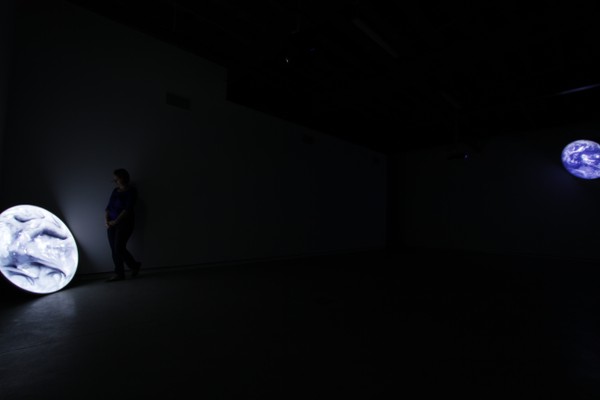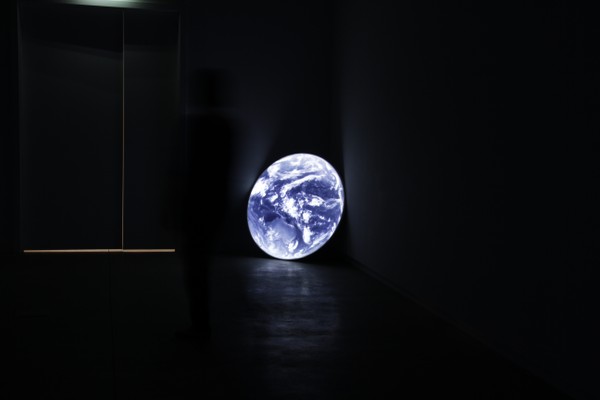JANINE RANDERSON, 2008
The Albedo of Clouds is an interactive experiment in the form of a conversation between three cloud observers: an artist, a sound artist and a meteorological satellite. As well as mediating between different modes of cloud observation, the subjective nature of cloud gazing is investigated in terms of how different technologies ‘see’ clouds, and how clouds might sound.
Although the performance-dialogue took place in 2008, the premise is an early 19th century meteorological experiment uncovered in archival research at the Museum Victoria, where meteorologist P. Barracchi and his colleagues attempted to record clouds from two separate locations at precisely the same instant using early photographic and telegraphic technology. The experiment measured height, velocity and albedo (brightness or reflexivity) of clouds.
In the Albedo of Clouds experiment, one video camera was positioned at Parliament House in Melbourne and another was positioned at Melbourne Observatory, mirroring Barracchi’s experiment. Two camera operators at each of these locations communicated with the use of a compass and mobile phone in an attempt to film the same cloud and the same time.
The footage captured from this earthbound observation was then paired with meteorological imaging data processed by Mike Willmott (Bureau of Meteorology, Satellite Division) generated from a remote observational perspective of the same clouds. The human performers attempt to reconcile our fugitive responses to cloud in an immediate verbal mapping of what we see, while the machinic vision of the satellite implicates us in the global atmospheric system.
The effect of cloud albedo on global warming is one of the more controversial issues among climate scientists. Clouds often feature in ‘Big Science’ geo-engineering projects to ward off atmospheric warming, and some scientists speculate that an increase in cloud cover could reflect sunlight back into space with a cooling effect.
By chance, the Bureau of Meteorology satellite radiometer documented and extreme weather event on May 2nd, 2008, when a severe cyclonic storm Cyclone Nargis made landfall in Burma causing great loss of life. As an inadvertent record of Nargis from that particular week in 2008, the animated satellite imagery of Albedo of Clouds became more explicitly connected to the current climate crisis, as increasingly, severe cyclonic events are generally accepted as an effect of global warming.
Clouds, while still ‘elevators of the imagination’ also operate at a level of anxiety, where cloud-gazing opens into speculation about the future of the earth’s atmosphere.

